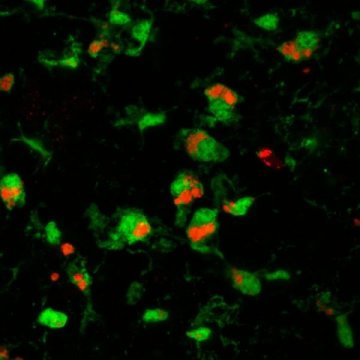[ad_1]
National Institutes of Health scientists studying the progression of inherited and infectious eye diseases that can cause blindness have found that microglia, a type of nervous system cell suspected to cause retinal damage, surprisingly had no damaging role during prion disease in mice. In contrast, the study findings indicated that microglia might delay disease progression.
The discovery could apply to studies of inherited photoreceptor degeneration diseases in people, known as retinitis pigmentosa. In retinitis pigmentosa cases, scientists find an influx of microglia near the photoreceptors, which led to the belief that microglia contribute to retina damage.
These inherited diseases appear to damage the retina similarly to prion diseases. Prion diseases are slow degenerative diseases of the central nervous system that occur in people and various other mammals. No vaccines or treatments are available, and the diseases are almost always fatal. Prion diseases primarily involve the brain but also can affect the retina and other tissues.
Expanding on work published in 2018, scientists at NIH’s National Institute of Allergy and Infectious Diseases (NIAID) used an experimental drug to eliminate microglia in prion-infected mice. They studied prion disease progression in the retina to see if they could discover additional details that might be obscured in the more complex structure of the brain.
When the scientists examined their prion-infected study mice, they found that photoreceptor damage still occurred — even somewhat faster — despite the absence of microglia. They also observed early signs of new prion disease in the photoreceptor cells, which may provide clues as to how prions damage photoreceptors. Their work appears in Acta Neuropathologica Communications.
The NIAID scientists, located at Rocky Mountain Laboratories in Hamilton, Mont., plan to continue to study the toxic interactions between prions and photoreceptor cells to identify ways to block these damaging effects. They also plan to continue studying the role of microglia in deterring the initiation of prion disease.
Story Source:
Materials provided by NIH/National Institute of Allergy and Infectious Diseases. Note: Content may be edited for style and length.
[ad_2]















